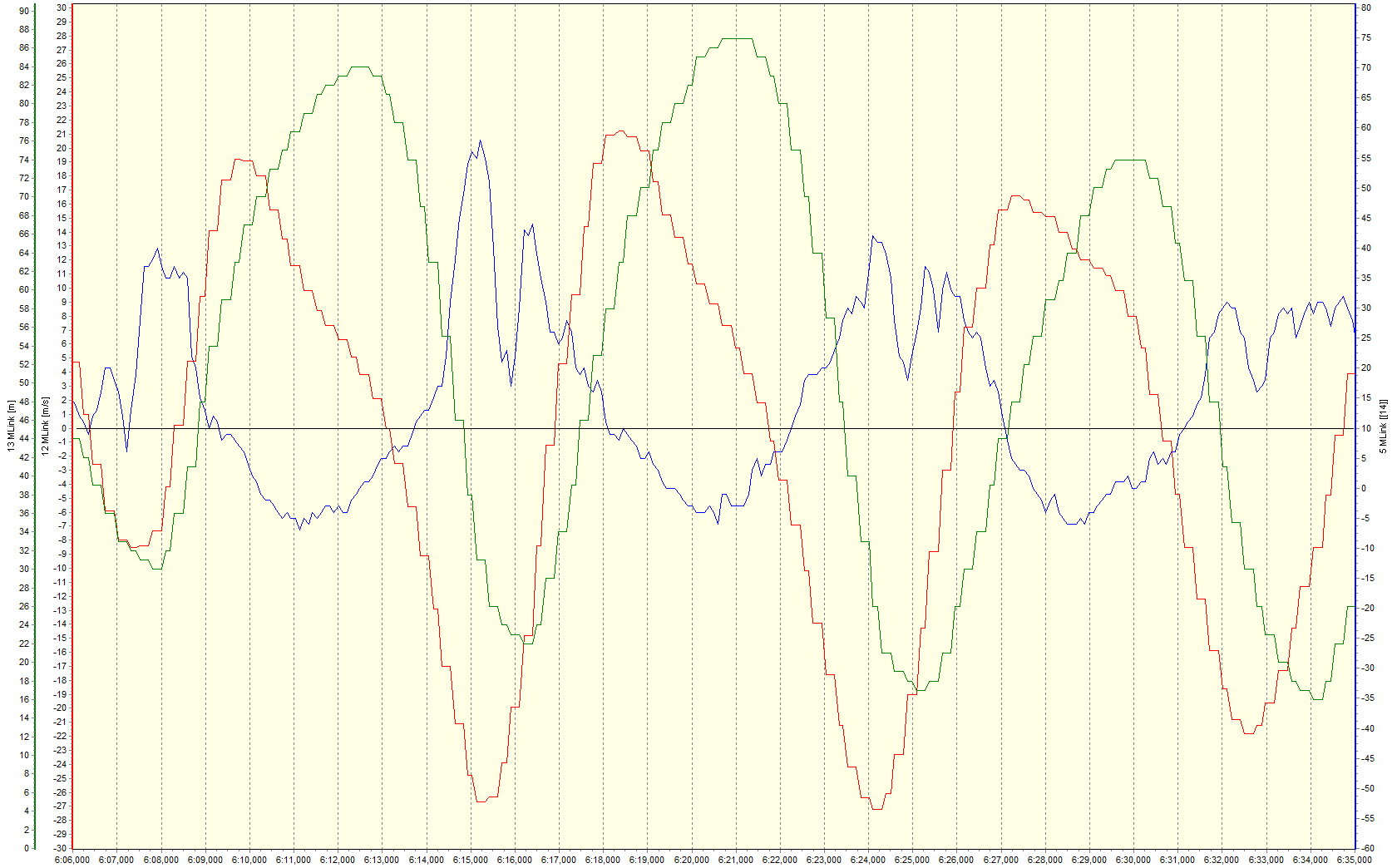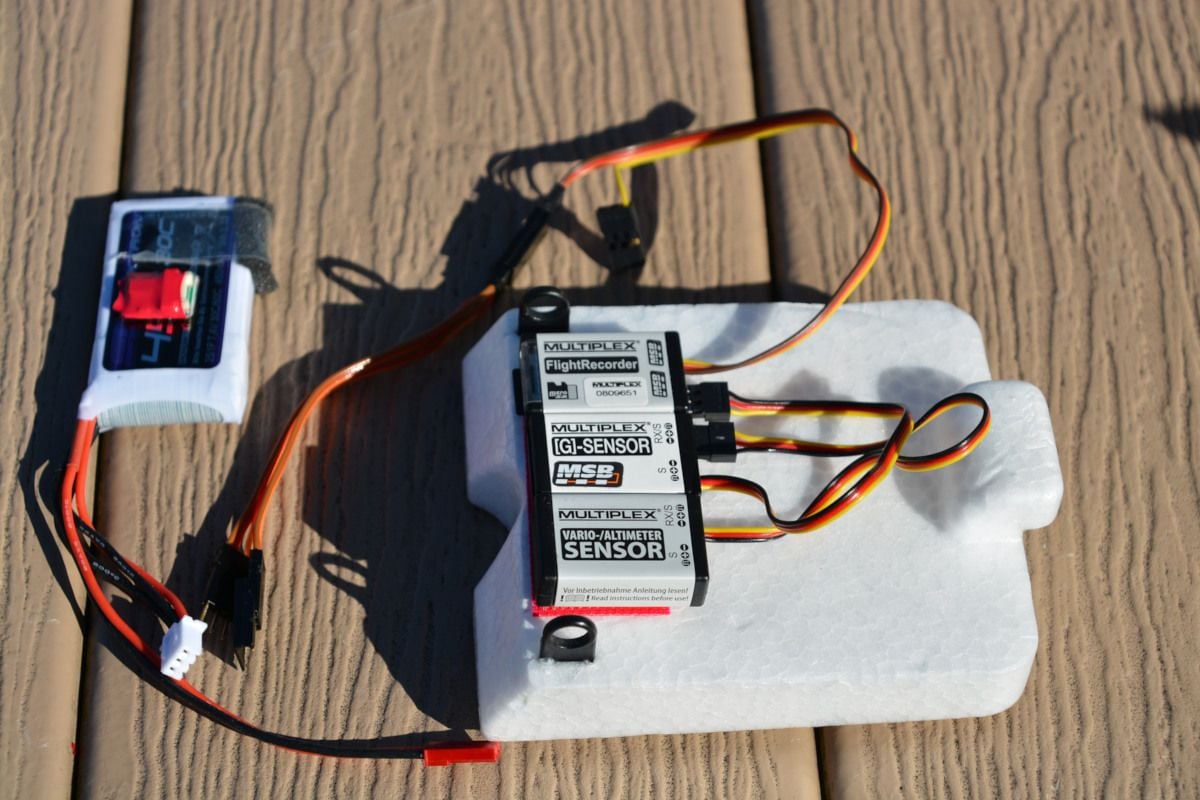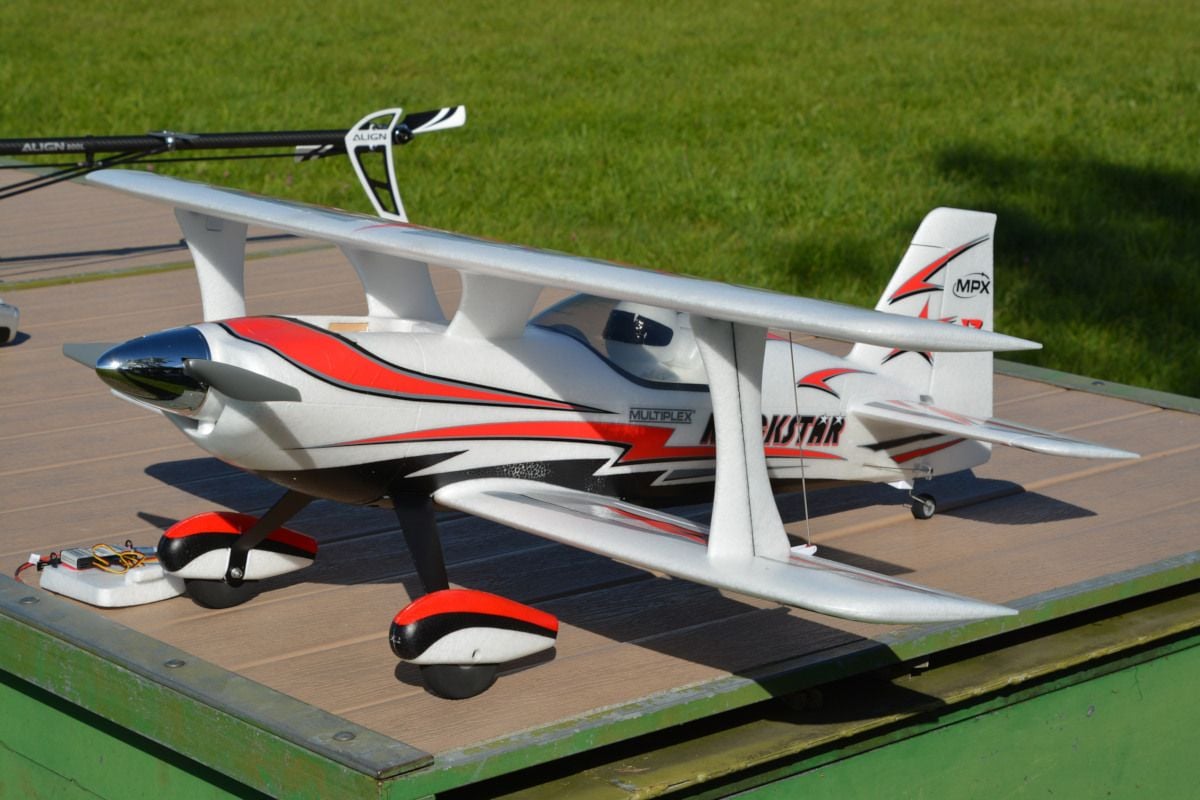Bump.
cutarug, in case it helps you, I measured the G-loads during loops (just for the fun of it). Those were not precision loops, just "normal", that is flown not especially slow and wide and not especially fast and tight either. It turns out that close to the top about -1/2 G (inverted) are acting on the airplane so half of its weight is borne by its wings and the other half by centrifugal force, as it were. Faster and tighter would mean more centrifugal force and less inverted wing lift, slower and wider vice versa. Compare to what your loops look like. For what it's worth...
You may have a look at a short video which shows three consecutive loops (actually the airplane like a speck in the sky), followed by two loops showing that the airplane goes up in a straight line when the elevator is released to neutral in the second quarter of the loop (make it full-screen).
The following diagram shows the measured data for the first three loops. Altitude (green) goes up and then down like waves, the loops unprecise with different top and bottom altitudes. Climb rate goes up in the loop's first quarter and down in the second, below zero in the third, and back to zero in the fourth. Altitude and climb/sink rate seem not quite synchronous. That may be a delay in calculating the climb/sink rate from altitude change, but I don't know.
G-rate is shown in tenths here, +10 being 1 G in upright flight. Anyway, G-rate goes down to -5 (-1/2 G) in all three loops' second quarter: The airplane has to crest the loop-top inverted on its wings. When flaring to level flight in the loop's fourth quarter I pulled up to 4 or even 6 G.
 Altitude [m] green, climb/sink rate [m/s] red, G-rate blue (+10 is 1 G in upright flight, 0 is weightless, -5 is 1/2 G inverted).
Altitude [m] green, climb/sink rate [m/s] red, G-rate blue (+10 is 1 G in upright flight, 0 is weightless, -5 is 1/2 G inverted).
Just to show how it has been done: I picked two sensors, a data logger, and a battery from other models and Velcroed them under an aerobatic biplane's hatch.
 G-rate sensor in the middle, altimeter/variometer below, data logger above, small 2s battery left.
G-rate sensor in the middle, altimeter/variometer below, data logger above, small 2s battery left.
That all just fit in the battery compartment, the hatch was just flush with the fuselage. Ram air pressure from the opening under the spinner is in the whole fuselage and may distort the barometric measurements (altitude from air pressure and variometer calculated from altitude change rate).
 Again the hatch with sensors and the biplane.
Again the hatch with sensors and the biplane.
Electric foamie, wingspan 41", weight 4#, thrust/weight about 1.
 3D capable biplane with huge controls.
3D capable biplane with huge controls.